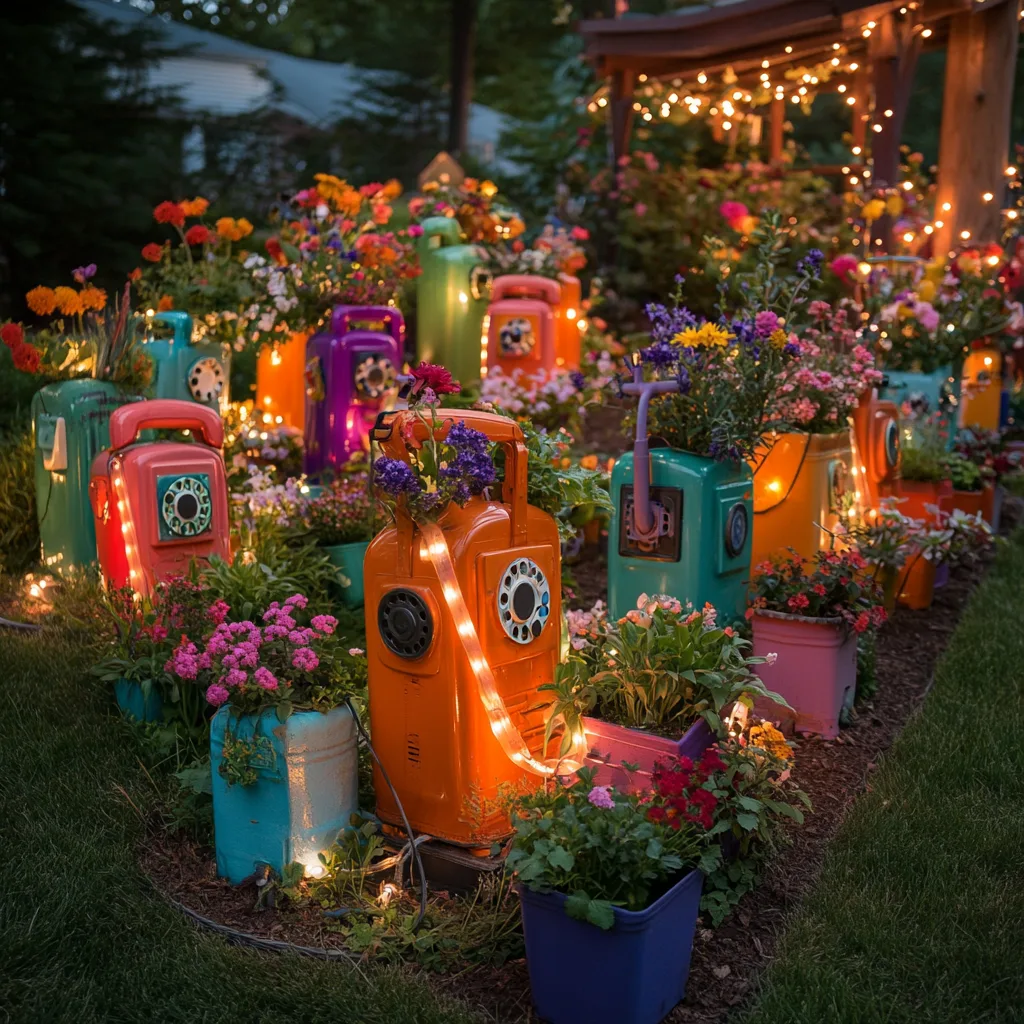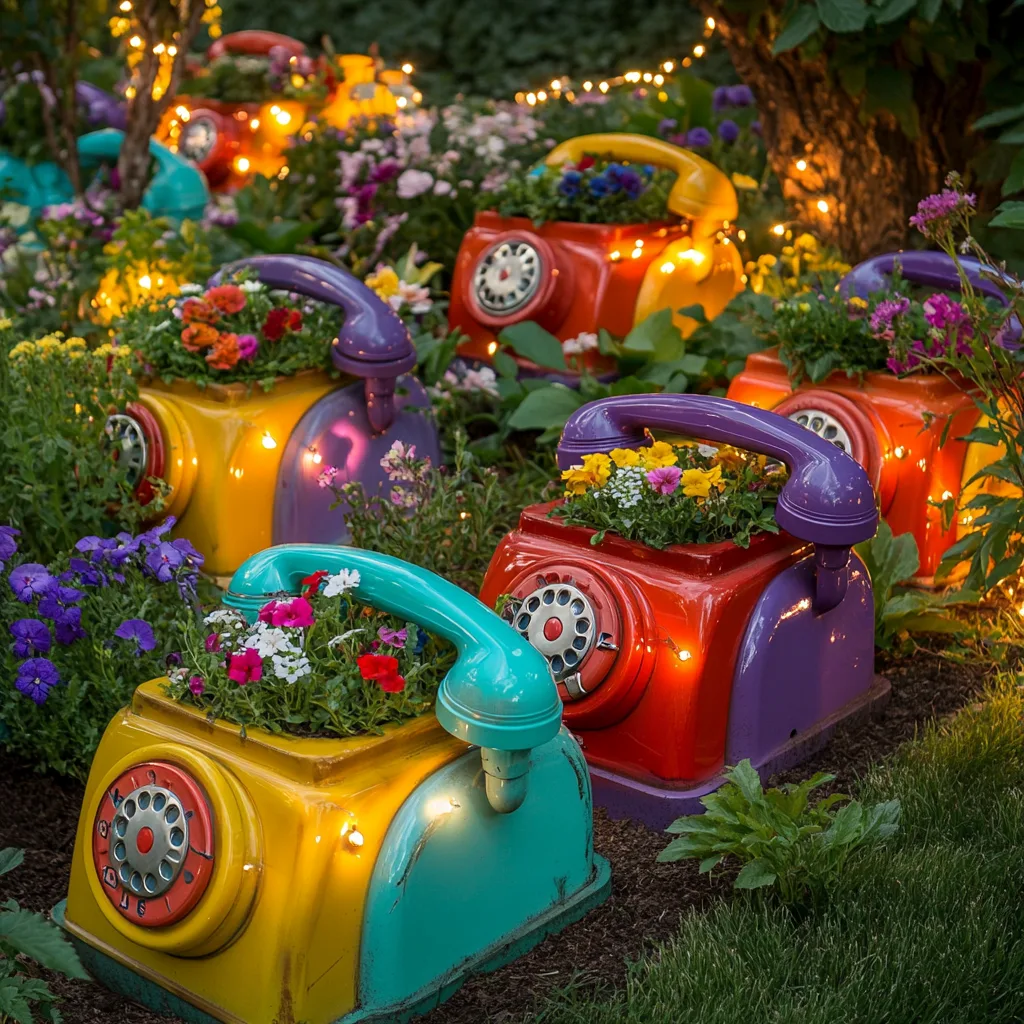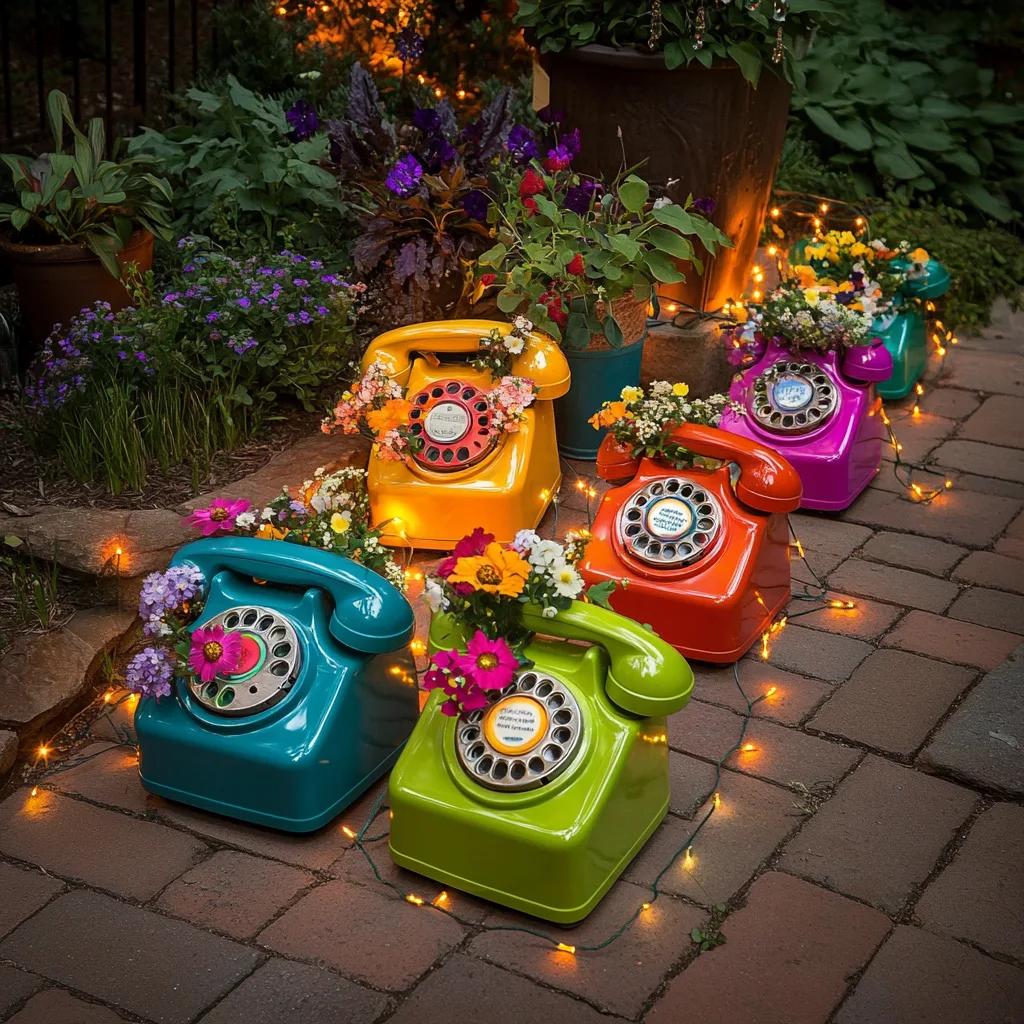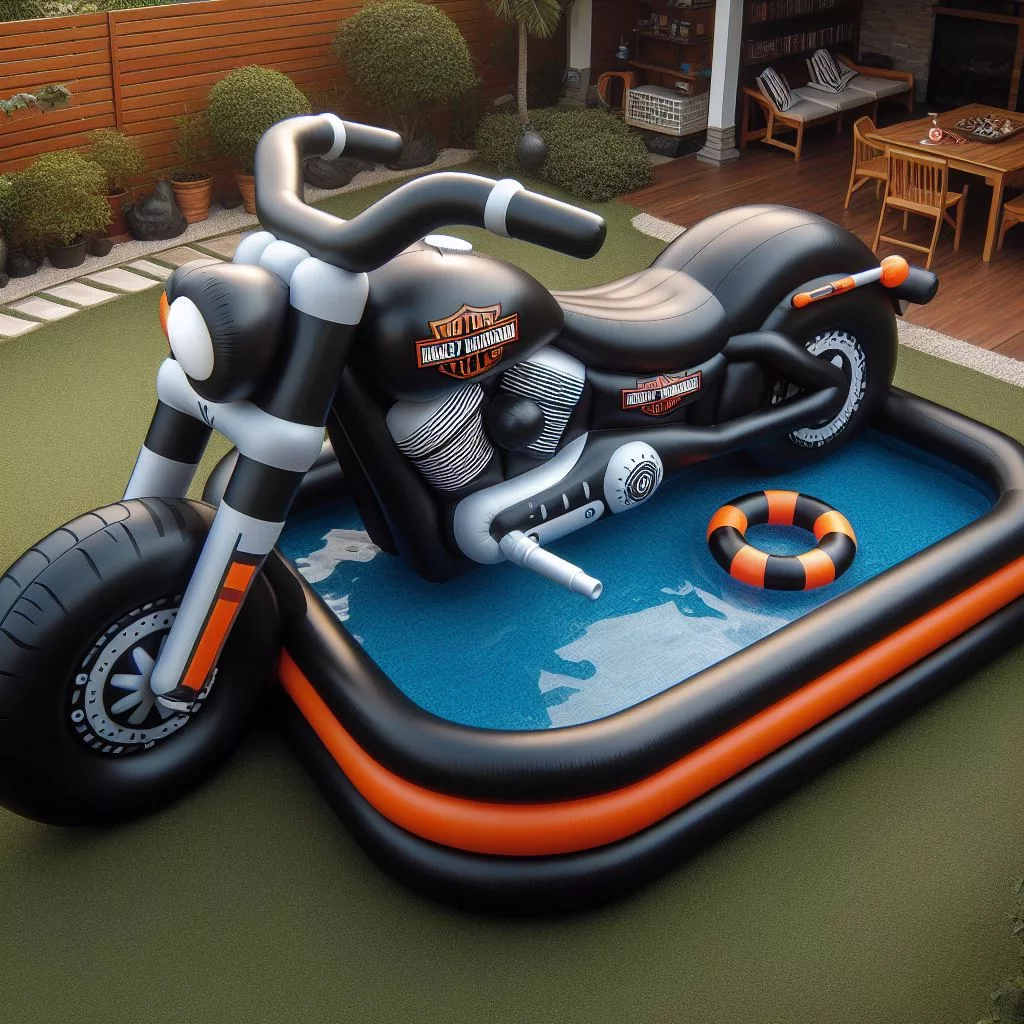A Nostalgic Twist to Green Living
Gardening is no longer confined to ceramic pots and traditional flower beds. In an age of creative sustainability, repurposing everyday objects into functional décor is a powerful trend. One of the most delightfully unexpected transformations in this category is the Telephone Pallet Planter—a whimsical fusion of vintage telecommunication nostalgia and modern-day upcycled gardening.
Imagine the iconic rotary dial or retro push-button telephone not on a wall or desk, but nestled among herbs, succulents, or cascading blooms. Paired with rustic wooden pallets, these old phones gain a second life as planters—adding character, texture, and conversation-starting appeal to any space. Whether used in small balcony gardens, cafes, urban patios, or community installations, telephone pallet planters make a strong statement about creativity and sustainability.
This article dives deep into the world of telephone pallet planters, exploring their appeal, design variations, construction techniques, and the artistic freedom they offer for anyone passionate about gardening with a twist.

Exploring the Art and Utility of Telephone Pallet Planters
The Vintage Appeal of the Telephone Aesthetic
Old telephones, especially those with rotary dials or 80s-era keypad models, evoke a deep sense of nostalgia. Their curves, buttons, and distinctive profiles symbolize a time when technology had tangible weight and presence. As these once-ubiquitous objects become obsolete, artists and DIYers are reimagining them in functional, garden-centric ways.
When embedded into or affixed onto a wooden pallet, these phones are no longer relics—they become living sculptures. They tell a story: of reuse, of memory, of the past connecting with the future of sustainability.
Each telephone brings a unique visual identity:
- Rotary phones have classic charm, especially when painted in pastel or bold colors.
- Cordless or keypad phones offer a more modern aesthetic, ideal for sleek urban gardens.
- Payphones or phone booths can be integrated into large pallet vertical gardens for theatrical effect.
Why Pallets? The Perfect Partner in Upcycling
Wooden pallets are among the most accessible and versatile materials in upcycling projects. Sturdy, rustic, and inherently modular, they serve as a stable backdrop for mounting planters—and in this case, telephones.
Used pallets are often discarded after shipping or construction, making them ideal for repurposing in eco-conscious DIY culture. When paired with an old phone, they create a fascinating contrast: the industrial meets the nostalgic, wood meets plastic, nature meets technology.
Pallets allow for:
- Vertical planting in tight spaces.
- Easy mounting and display of decorative elements like phones.
- Multi-level gardens that can combine flowers, herbs, vines, and even mini veggies.

Construction Techniques and DIY Tips
Creating a telephone pallet planter requires minimal tools but plenty of imagination. The process involves combining three core elements: the pallet frame, the telephone planter, and the plants themselves.
1. Selecting the Right Phone
Choose a phone that’s visually striking. Vintage styles work best, but even modern office phones can add a unique twist. Remove internal components (to reduce weight and allow planting), and clean thoroughly.
2. Preparing the Pallet
Sand and seal the pallet wood if you want a cleaner finish, or leave it rugged for a rustic look. Consider painting it to match or contrast with the phone’s color. Install wire mesh, planter boxes, or fabric pockets in the pallet slats for planting.
3. Integrating the Telephone
There are two main methods:
- Hollow out the handset or base to create space for small succulents or moss.
- Mount the phone as a decorative frame, attaching smaller plants around it or using the receiver cord as a vine path.
Secure the phone to the pallet with screws, industrial glue, or brackets.
4. Choosing the Right Plants
Opt for low-maintenance, shallow-rooted plants like:
- Succulents (for handset hollows or phone mouths)
- Creeping vines (to trail along cords or pallet slats)
- Herbs (for functional and fragrant greenery)
- Mosses or air plants (no soil needed, easy to tuck into narrow gaps)
Ensure you water carefully and monitor sunlight depending on plant needs and placement.
Artistic and Functional Variations
While the basic concept is playful, the creative options for telephone pallet planters are nearly endless.
Color Schemes and Paint Finishes:
- Bright, pop-art styles for maximalist spaces
- Black-and-white or grayscale for industrial chic
- Pastels for cottagecore or vintage-inspired looks
Themes:
- Steampunk phones on aged, dark-stained pallets with brass planters
- Tropical themes with neon phones and lush greenery
- Retro diner gardens with candy-colored phones and faux 1950s signage

Interactive Elements:
- Insert Bluetooth speakers into phone bodies to play garden sounds.
- Add solar-powered lights inside the receiver for nighttime glow.
- Attach mini chalkboards for labeling herbs or adding messages.
Scale:
- Use multiple phones across a wide pallet wall for a gallery effect.
- Create a mini planter using just a single phone on a narrow board for desktop or shelf use.
- Go big: attach multiple pallets with phones to an exterior fence or vertical garden wall.
The Message of Reuse and Sustainability
Beyond aesthetics, the telephone pallet planter carries a deep ecological message. It demonstrates the potential of repurposing outdated technology—items that might otherwise become landfill clutter—and transforming them into life-giving art.
This functional form of recycling encourages creative thinking, promotes sustainability, and helps reduce waste. It also fosters emotional engagement: transforming a symbolic item of communication into a living conduit of growth.
Whether displayed in public parks, educational gardens, coffee shop patios, or home porches, these planters show that with a little imagination, yesterday’s devices can fuel tomorrow’s greenery.
Where to Display and Showcase Your Creations
These planters are not just for private enjoyment. They shine in various public and creative settings:
- Balconies and patios: Use as compact vertical gardens.
- Cafés and restaurants: Offer Instagrammable décor with a quirky, sustainable twist.
- Boutiques or vintage shops: Reinforce brand identity with creative installations.
- Community gardens: Celebrate shared creativity and resourcefulness.
- Libraries or schools: Combine environmental education with art.
Their unconventional beauty catches the eye and invites people to stop, look, and engage—not just with the plants, but with the message of transformation they represent.
Creativity Takes Root in the Past
The Telephone Pallet Planter proves that even the most outdated or forgotten objects can sprout new life—literally. It’s a design that embodies imagination, storytelling, and sustainability. Each planter becomes more than a gardening tool; it becomes an artwork that brings joy, memory, and growth together.
By rethinking the function of vintage telephones and pairing them with humble pallets, designers and hobbyists alike can create something remarkable: a vertical garden that speaks not just in greenery, but in symbolic harmony between past and future.
For those who love to garden, craft, and repurpose, the telephone pallet planter isn’t just a trend—it’s a medium of expression. A charming way to grow plants, tell stories, and share the message that creativity knows no bounds when it blooms in unexpected places.








